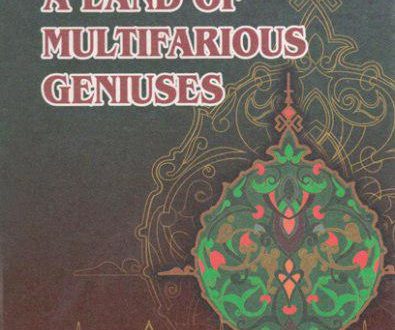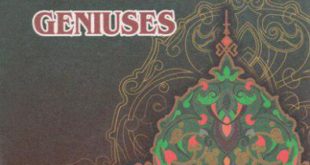“Tazkirat ash-shuara” or “Tazkirati Davlatshahi” consists of a preface, conclusions and seven parts.
The preface explains the reasons for writing the book and provides information about the life and creative activities of ten Arab poets (Labid (the 7th century), Abu Nuvas (died in 814), Abu Jayyib al-Mutanabbi (died in 963), Abu A’la al-Maarri (973-1058), etc.) who lived in the 7th-llth centuries.
The first and the second parts of the book are devoted to the description of 21 great poets of Iran and Central Asia who lived in the lOth-llth centuries.
The third, the fourth and the fifth parts of the book deal with the lives and activities of 54 poets who lived in Khoresm during the reign of kings of Khoresm – Anushtagenis (1077-1231), Elkhanis (1258-1349) and Muzaffaris (1315-1393).
The last two parts of the book are devoted to the description of the lives and activities of 41 poets of Central Asia, Iran and Iraq who lived and created their works during the reign of Amir Temur and the Temurid princes.
The conclusion of the book contains precious information about the great contemporary poets and scholars of the author such as Abdurrahman Jami, Alisher Navai, Khoja Afzaliddin Muhammad, Amir Ahmad Suhayli, Khoja Shahabuddin Abdullah Marvarid and Khoja Asafi.
The works of the poets collected in “Tazkirat ash-shuara” by Davlatshah Samarqandi play an important role in studying and investigating the general direction of the classic literature of the East, its development, as well as in studying the genres of poetry such as “rubai”, “qasida”, “ghazal”, “hajv” and forms of poetry as “tarsi”, “tajnis”, “tarjiband”, “murabba”, etc.
The list of poets whose lives and creative activities were described in the book includes the names of such representatives of the genre of epic poetry as follows: Javhari Zargir; Khoja Kirmani; Jalal Tabib; Khoja Ismatulla Bukhari; Aminiddin Nuzulabadi; Farrukhi (died approx. in 1037-38), who was famous for his works in prose and poetry as “Tarjiman al-balagha” (A book explaining the secrets of oratory); Nizami Aruzi Samarqandi (the 12th century), who was known for his book “Chahar maqala” (Four articles); Qatran ibn Mansur Termizi (the 12th century), who compiled the Persian dictionary with commentaries; Rashididdin Vatvot of Khoresm, who compiled the book “Hadaiq as-sehr” (Secret gardens); Mujiddin Juvayni, the author of the book “Nigaristan”; Yahya Sebak Nishapuri, the author of the book “Shabistani khayal”; Sheikh Azari, who could create such a pleasant book “Javahir ul-asrar” (Pearls of secrets) which was accepted by the readers of the East with pleasure; Sahib Balkhi, who was one of the most famous representative of the science of music; Simi Nishapuri, who was a skilled expert in letter writing and calligraphy, and others. Their creative works in the fields of literature and poetry occupy very important place in the development of science in the East of the Middle Ages.
The representatives of literature and poetry provided in the book are mostly the well-known creators of their time such as Avhadiddin Anvari (the 12th century), Rashididdin Vatvot Khoja Ismatullah Bukhari (165-1426), who founded the tradition of “mu-lammah” (the style of writing a poem in two languages) and made a noticeable contribution to the development of humoristic genre in literature.
“Tazkira” also involves the names of such great figures in the classical literature as the poet and scholar Nasir Khusrav (1004-1088), the great representative of the Eastern classical poetry and famous expert in music Khusrav Dehlavi (1253-1325), the poet and famous historian Fahriddin Binakati (died in 1329), Kamal Khojandi (1318-1401), Abdurrahman Jami, Alisher Navai as well as such representatives of the ordinary people, peasantry and craftsmanship as Jamaliddin ibn Ja’far Farrahani who wrote a poem consisting of a thousand lines as an answer to Nizami Ganjavi’s “Mahzan ul-asrar”, Muhammad Hisamiddin who spent his whole life working in fields as a peasant and created poems writing them on the handle of his hoe, Simi Nishapuri who was a representative of the ordinary people and became famous in poetry, calligraphy and engraving and Bisati of Samarkand who was an expert in weaving cane carpets.
Moreover, “Tazkira” includes information about the creators of verses such as Yaminiddin Farkhamadi and his son Amir Mahmud (ibn Yamin), Ubayd Zakani, Burundi Bukhari and Baba Savdai Abi-vardi, who criticized the rulers, doctors, deputies and judges. These materials make a noticeable contribution to the importance of this book.
The book also describes the important political events in the history of the country. They deal with the fights of Central Asian, Iranian and Afghani people under the leadership of Jalaluddin Manguberdi against Mongol invaders led by Genghis Khan during 1221-1232. The book also reflects the events concerning the riot of Sarbadars which took place in 1337 in Khorasan and the result of c the riot, the formation of the state of Sarbadars in a bigger part of Khorasan during 1337-1381.
The book also deals with the details of events concerning the . political life that took place in Khorasan and the southern part of Central Asia in the 40s of the 15th century as well as the lives of such well-known figures of that time as the Vizier and scientist Nizamu-l-mulk, a great poet and scholar Umar Hayyam, the founder of the Ismailiya order in religion Hasan Sabah, a great astronomer and thinker Mirza Ulugbek and others.
 Imom Buxoriy xalqaro ilmiy-tadqiqot markazi bukhari.uz
Imom Buxoriy xalqaro ilmiy-tadqiqot markazi bukhari.uz











